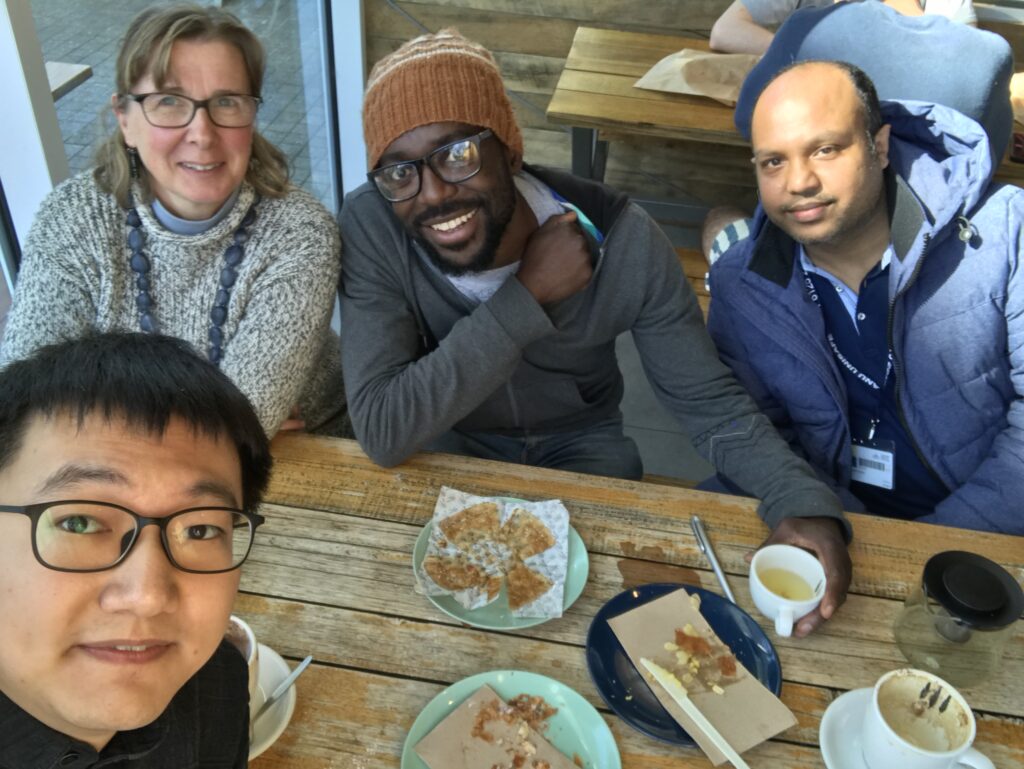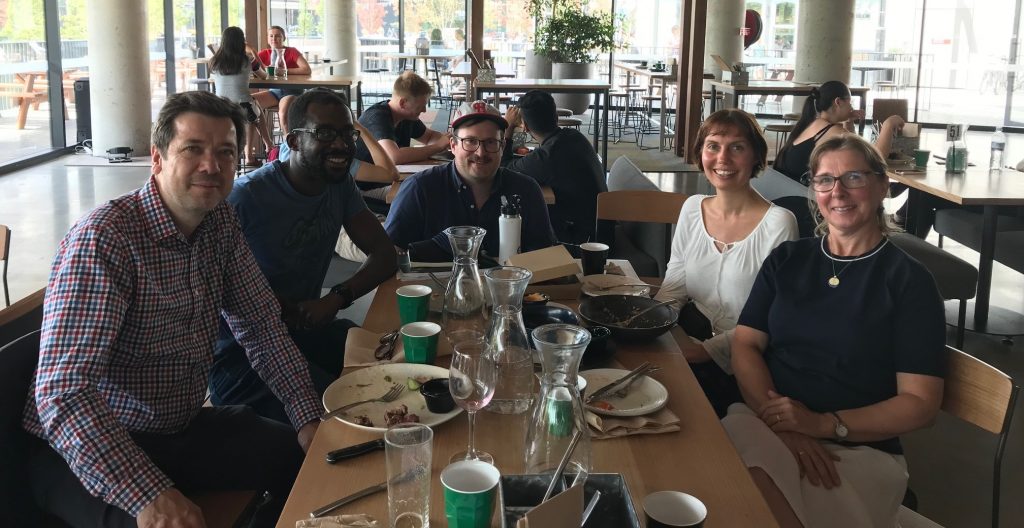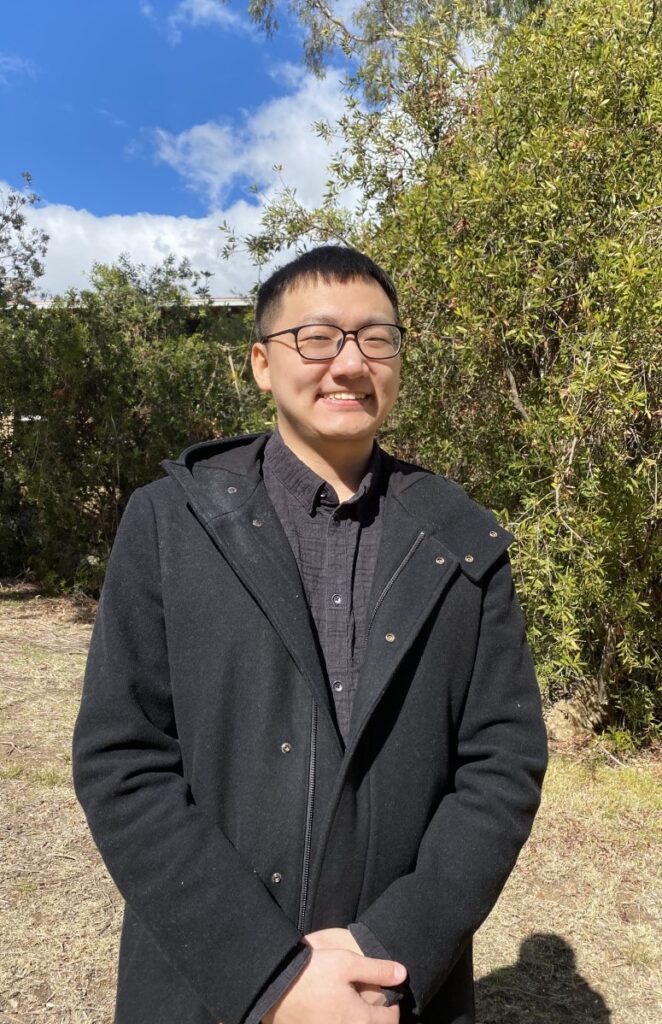Ian Rayson, ABS

Members of the SPARSE research team welcome Sumon on his first day on the ANU campus. L-R: Mu Li, Alice Richardson, Bernard Baffour, Sumon Das

Members of the SPARSE research team at lunch following a seminar by Professor Michel Guillot, University of Pennsylvannia. L-R: Michel Guillot, Bernard Baffour, Collin Payne, Susanna Cramb, Alice Richardson.

Mr Mu Li commenced his PhD studies on this project in August 2020. His project, ‘Two-Way Bivariate Outcomes Small Area Estimation using Spatial Bayesian Hierarchical Models’ aims to make several contributions to the field of small area estimation.
Mu’s Self Introduction:
My broad research interest resolves around small area estimation by spatial models, which focuses on multivariate outcomes distributional estimation by Bayesian hierarchical models and the m-quantile method. It is my great interest to reveal the cause and effect of smoking prevalence across Australia by the tool of statistics.
From 2017 to 2020, I tutored and demonstrated undergraduate mathematics at MSI in ANU. I also took the role of research assistant, located in the Statistical Consulting Unit, in February 2020 where I contributed to construct and implement a conditional autoregressive Bayesian model for narrowing down deviations of the estimation of Australian early childhood development. In August 2020, I joined in the School of Demography as a PhD candidate.
It is my honour to work in the SPARSE research team and pay my efforts to help with population health.

Dr. Sumonkanti Das (pictured above) has recently joined the SPARSE team in 2021.
Sumonkanti’s Introduction:
Sumonkanti Das completed his PhD in statistics from the University of Wollongong. He did his PhD in the area of small area estimation (SAE) focusing on robust inference in poverty mapping with a particular interest in developing countries like Bangladesh. After his PhD, he worked as a post-doctoral researcher at the Quantitative Economics department within the School of Business and Economics at Maastricht University, the Netherlands, during the period of 2018-2021. He contributed to several joint research projects of Maastricht University and the Statistics Netherlands (CBS), where he extensively worked on multilevel time series modelling to estimate mobility trends for small domains of the Dutch population by accounting for survey redesigns over the period 1999-2019. Before joining the SPARSE research team, he was also affiliated as a faculty member of the Department of Statistics, Shahjalal University of Science and Technology in Bangladesh. Mr. Das has an immense interest in implementation of SAE methodology in the field of population health and nutrition. Thus, the scope of working in the SPARSE project might open up a new window in his research career.
